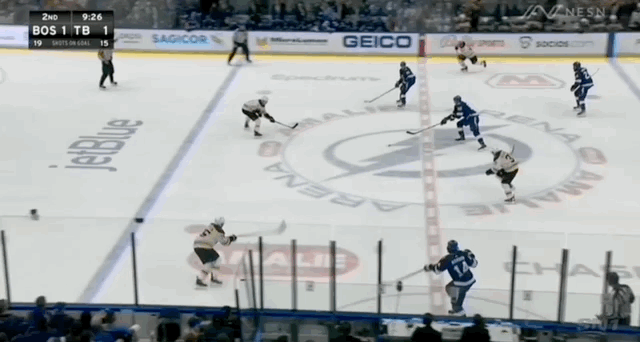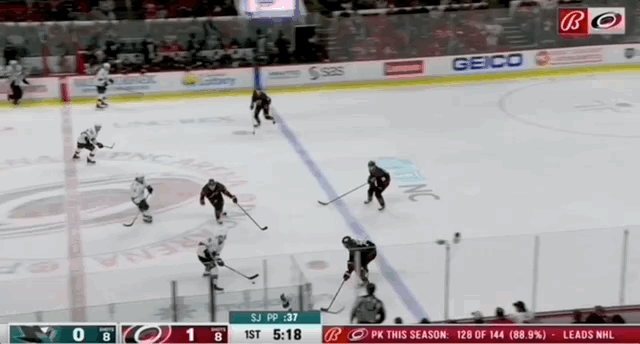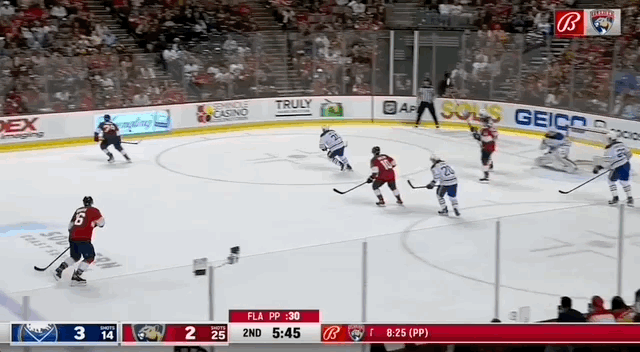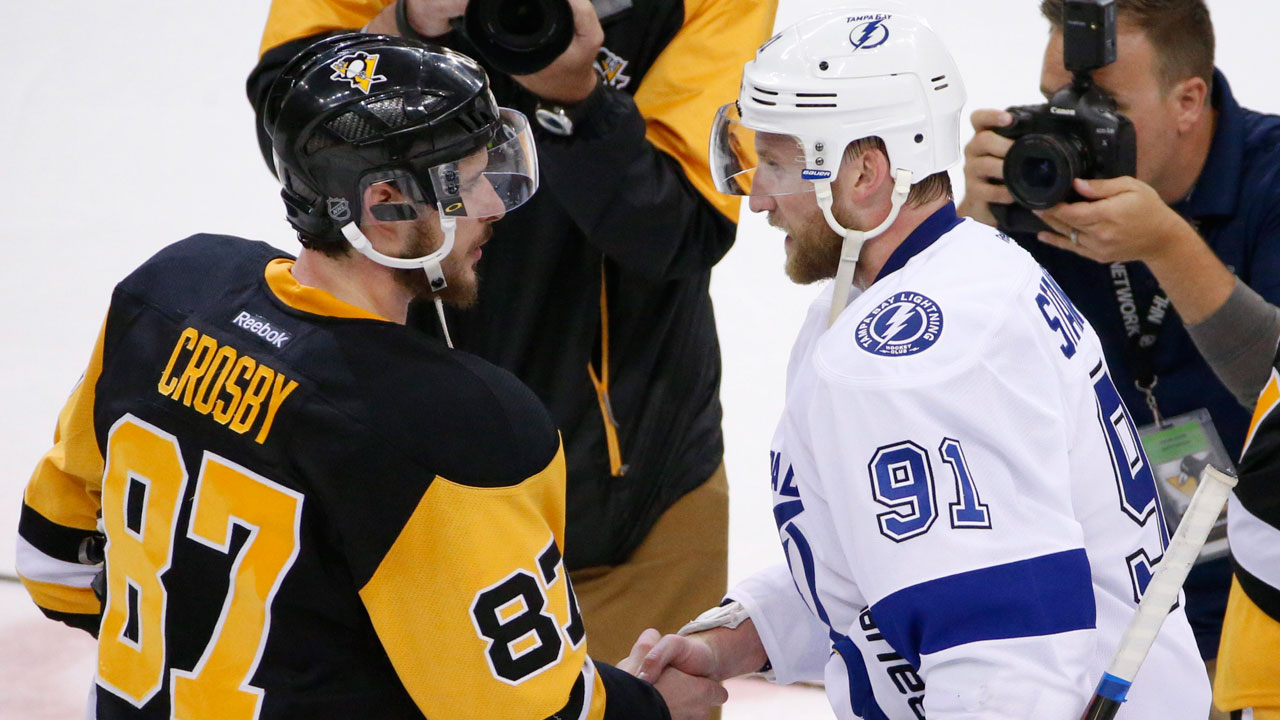With the 2021-22 regular season coming to a close, it’s time to take a look back at some things we learned from it before jumping right into the post-season.
We’re not going to bore you with the obvious. Connor McDavid? Elite. Auston Matthews? Elite. Igor Shesterkin, Cale Makar? All elite! Scoring is up and the league hit marks they haven’t seen in years.
What else can we take away from 2021-22? Let’s have a closer look.
The pool of rookies for the Calder Trophy was deep this year, and it shows just how bright the future is with this developing skill.
There’s Moritz Seider in Detroit, a favourite for the Calder after playing tough minutes on a weak team. He was strong in his own end, with his efforts to close passing lines. And he helped extend his team’s time in the offensive zone with a high rate of keep-ins, too.
Sticking with the Red Wings, there was Lucas Raymond who brought a scoring touch alongside Dylan Larkin. In Anaheim, Trevor Zegras legitimately is helping change the game with his incredibly skill and gutsy trick shots.
Matt Boldy joined the Wild mid-year and made an instant impact with his passing, with a rate of 51.1 pass attempts per 60 that not only ranked well in Minnesota, but around the rest of the league. His passing to the slot increased Kevin Fiala’s quality shooting. And he kicked in his own scoring chances.

Seth Jarvis, Peyton Krebs and Sean Durzi were other first-year players worth watching, along with Dawson Mercer in New Jersey. Owen Power’s start in Buffalo to end the season bodes well for next year’s rookie class, too.
While the influx of young talent builds for a bright future, there’s still quite a few players excelling into their 30s like Mats Zuccarello, who revitalized his game playing alongside Kirill Kaprizov, and Jonathan Quick with one of his best seasons in years between the pipes in Los Angeles.
Maybe we’re bored of Sidney Crosby still being elite at 34 years old, but despite missing time, he still had an MVP-calibre season. One aspect that really stood out at 5-on-5 was his ability to move the puck to the slot with the seventh best rate of passes (15.4 per 60). It’s no surprise his winger Jake Guentzel was one of the best at shooting from that area.
Patrice Bergeron’s built a reputation for stellar defensive play. That consistency is still showing at 36 years old, with a Selke-calibre season regardless of whether that’s measured for two-way or defensive play alone. He was one of the best at using his stick to knock opponents off the puck in all three zone, blocking passes, holding the blue line, and recovering loose pucks. That all aided his shot suppression. Add in the fact that he was one of the best volume shooters, with 21.3 attempts per 60 coming off his stick at 5-on-5.

While his scoring did slow in the second half of the year, 36-year-old Alex Ovechkin earned his ninth 50-goal season. As per usual, it was his overwhelming shot volume that highlights his game. Power play aside, where he’s one of the biggest threats in the league from the left circle, at 5-on-5 he finished 11th in the league with 18.7 shot attempts per 60. And he moved up a slot in the rankings when it came to quality shots, with 9.6 attempts from the slot. His finishing ability took care of the rest.
Steven Stamkos hit the 100-point mark, surprisingly, for the first time in his career. With 4.25 points per 60 that landed fifth in the league, he scored at his best pace yet. His patented one-timer from the left circle, that he fired at the fourth best rate among forwards on the power play of 23.7 shots per 60, shined. And that’s just one aspect of his offensive creation, since he’s become more of a passer in recent years, too.
Matt Duchene bounced back from a disappointing year in Nashville, where he earned just 13 points in 34 games. Dylan Larkin looked more like the first line centre Detroit knows he can be this year. Jake DeBrusk hit his stride after moving up to the first line in Boston with Bergeron and Brad Marchand, moving David Pastrnak to the second line to give the team a more balanced attack.
Injuries impacted Viktor Arvidsson’s game over the last couple of years, but in his first season with the Kings, he rebounded to become a key contributor. Not only was he capable of bringing the puck into the offensive zone with possession, earning the ninth-best controlled entry rate at 5-on-5, but his signature volume shooting returned, too. No one attempted more shots than Arvidsson’s 23.3 attempts per 60.
Speaking of players impacted by injury, how about Vladimir Tarasenko? Like DeBrusk, he too requested a trade from his club earlier. But there were no takers for his hefty cap hit, especially with some uncertainty on how he’d perform. The power forward refined his scoring touch and drove to the slot at the second highest rate behind only Matthews at 5-on-5. It didn’t hurt that he was set up by one of the best passers in Robert Thomas, either.

Carolina took 298 penalties this season, yet they had the lowest rate of goals against while short-handed at 4.28 per 60. It’s more than just goaltending in those situations, though. It’s the team’s aggressive approach in front of the blue paint.
Jaccob Slavin and Teuvo Teravainen are active with their sticks, checking pucks away from power-play skaters. Jordan Staal, Sebastian Aho, and Martin Necas all can bring the puck out of their own end with control. And when they manage to drive play down the ice, Necas, Aho and Jesper Fast all rank highly among penalty killing forwards in their ability to hold play in the offensive zone.

By disrupting teams’ power-play formations, the Hurricanes do well to keep opponents to the outside and create chaos on the other end of the ice; their shot volume put them fourth in the league on the penalty kill. That all contributed to them earning the lowest expected goal rate against on the penalty kill of 4.81 per 60.
Teams drag their feet to embrace new styles and ideas in what often is a risk-averse environment. But this year, we saw a few teams take leaps and it paid off.
The Hurricanes’ penalty-killing strategy isn’t new to this season — think back to the Flames a few years back and the Blue Jackets — but it’s one example of a team pushing past the one-dimensional defensive shell that some employ while short-handed.
Marty St. Louis’ concepts over systems gave the Montreal Canadiens a boost, especially to some of their more offensively inclined players who struggled before the coaching change. Cole Caufield’s the perfect representation of that, thriving under a fellow short king as head coach with more confidence and encouragement to take the opportunities to drive to the slot.
Another example is the Panthers’ innovative five-forward power play after Aaron Ekblad went down with injury and the team acquired Claude Giroux. Instead of limiting their firepower with another defender, they moved Selke-calibre centre Aleksander Barkov to the blue line while on the advantage — and it’s had a positive impact.

There’s been slight improvements in Florida’s expected goal generation (plus-0.38 per 60) and actual scoring (plus-0.45 per 60) since the deadline while on a 5-on-4 power play. But what really stands out is their control and ability to stay in the zone. After spending about 68.6 percent of their power-play time in the offensive zone pre-deadline, that’s risen up to 71.8 percent without a defenseman holding the blue line.
Data via Sportlogiq



 5:27
5:27 6:55
6:55 3:23
3:23

COMMENTS
When submitting content, please abide by our submission guidelines, and avoid posting profanity, personal attacks or harassment. Should you violate our submissions guidelines, we reserve the right to remove your comments and block your account. Sportsnet reserves the right to close a story’s comment section at any time.